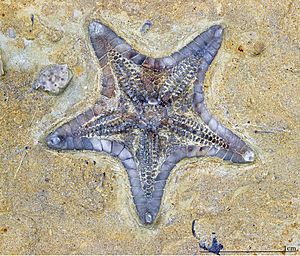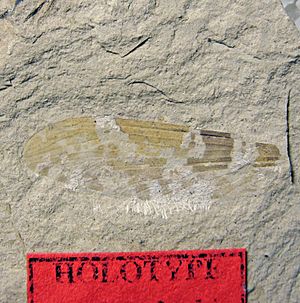Type specimen facts for kids
In biology, a type specimen is a very important example of an animal, plant, or other living thing. It's the specific sample that a new scientific name is officially linked to. Think of it like the "original copy" for that name.
Scientists need to keep these specimens safe for a very long time, sometimes for hundreds of years. This is so other researchers can study them later. A specimen can be a whole organism, just a part of it, or even many tiny organisms together.
Most type specimens are kept in museums or special collections. This makes sure they are protected and available for scientists to examine. It's important to know that a type specimen doesn't have to be a "perfect" or "typical" example of its kind. It just needs to be the one chosen to represent the name.
Contents
What is a Scientific Name?
Every known species has a unique scientific name. This name has two parts, like Homo sapiens for humans. This system helps scientists worldwide know exactly which organism they are talking about.
When a scientist discovers a new species, they describe it and give it a scientific name. They also pick a type specimen. This specimen then becomes the official reference for that name.
Why Are Type Specimens Important?
Type specimens are super important for several reasons:
- They act as a permanent reference point for a species' name.
- If scientists disagree about a species, they can always go back to the type specimen.
- They help make sure that scientific names are used correctly and consistently.
- They are like a library of life, showing us what different species look like.
Different Kinds of Types
While the type specimen is the most famous, there are other kinds of "types" in biology. For example, the "type" for a group of animals (like a genus) is often a type species. This means a specific species is chosen to represent that whole group.
Sometimes, one type specimen can have several scientific names linked to it. For instance, a single plant specimen might be the type for a family name (like Fabaceae), a subfamily name (like Faboideae), and a genus name (like Faba). Even if many names are linked to it, only one name is considered correct for a specific group of organisms.
Images for kids
-
The common toad, Bufo bufo, was described by Carl Linnaeus. It is the type species for the genus Bufo.





